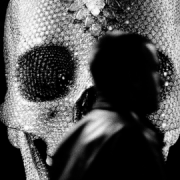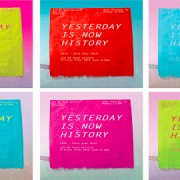Fans would expect a lot of noise from Thurston Moore, ex-guitarist from New York band Sonic Youth. But what east Londoners saw in his two-nights residency this week at Cafe Oto, in Dalston, proved that he is deeper in the musical lab.
On the first night, Wednesday August 6, he was joined by John Edwards on the double bass and Adam Golebiewski on the drums.
Chilled and relaxed outside the venue before the beginning, Moore was wearing jeans and a simple t-shirt with the word “High” written, which reminded his old rockstar days.
From 1981 to 2011, Sonic Youth released 16 studio albums, 21 singles, 46 music videos and tons of other materials. They never topped the charts, however they were, ant they still are still hugely influential rock artists. Their most successful album in the UK was “Dirty”, from 1992, that reached number 6.
As one of the minds and fast hands behind his former band, the guitarist is known for performances that end up with broken strings and smashed guitars. Despite Sonic Youth’s lack of pop hits throughout their career, a loyal fanbase was built and they were definitely responsible for both sold out gigs in Dalston.
The first night of the Dalston concerts was divided into two sets, both lasting 40 minutes. The band went straight up with no breaks on each part. One “song”, no beats, no limits to the noise. Someone would think that the structure – double bass, guitar and drums – could lead more into a jazzy sound, but that was out of the question unless it meant improvisation to its highest.
It was pure experimental, with different moods and vibes along the way, craved with distortions, tappings and strong scratches.
People had a chance to see a close up of Moore’s intimacy with his guitar, a guitar that had suffered from years of too much rock and roll jamming. Between sets, he would change his shirt from so much sweat and intensity.
It makes you wonder what goes through his head while his eyes are closed. At many times, he looks like he can hear some kind of melody that seems to be bringing all of this to sense.
It’s definitely the similarities in the attitude towards the instruments that united the trio. While Moore’s guitar only seems to be an extension of his body, Edwards hits and taps his double bass as if there were hidden sounds somewhere inside of it. Golebiewski matched the combination by scratching his drums furiously with forks, stones and pieces of cans.
On the second night, Thursday August 7, the atmosphere changed with the presence of a German guitarist, Caspar Brötzman, and the new duo format. Again, there were no riffs, and they rolled for the same two-set 40 minute straight up model. The approach was naturally more rock with the two experienced guitarists on stage.
Moore was even more focused than the day before, and alongisde Brötzman they did a vibrant dialogue with distortions and tappings on the instruments. Again, melody was not the biggest concern. Instead, they went to a pathway covered with different emotional sounds.
Nevertheless, it was clearly more important to the crowd to witness their capacity for bringing unexpected sounds to life than anything else. As if there was someone saying “forget about music, just hear the dialogue between the guitars.”
The two nights were not for beginners. For some people, the wall of experiments was too much, as a few of them left during the shows.
However, open-minded fans were taken by Moore and his stage mates to an intriguing and extensive playground of noises.






